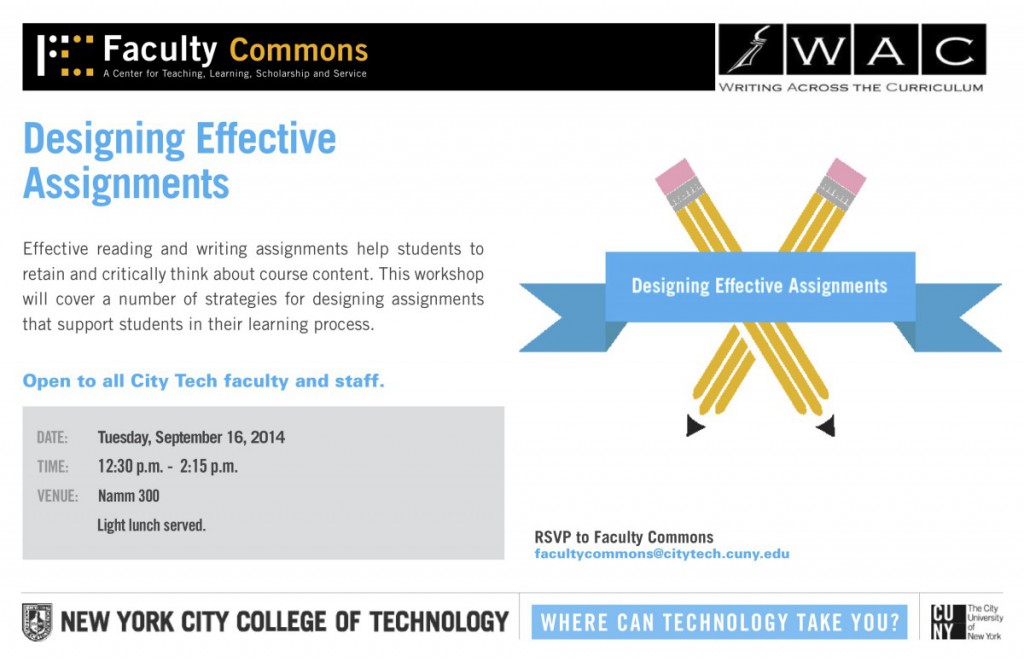It’s on the syllabus: Read Chapters 2 and 4 for next’s week’s discussion. Next week comes and less than half the class has read the assigned text…After the sigh, there is the impromptu lecture filler. Besides the busy lives of college students, there may be another reason why students have not read the text—it may be too difficult for them. Even so, the goal is not to “lecture over the assigned text” (Bean, 2011, p. 163). There are ways to support students in becoming stronger readers and empower them to encounter difficult texts.
One of the basic principles of WAC is that writing promotes learning and develops critical thinking skills. Part of this is the ability to anchor one’s arguments in text, which necessitates an understanding of disciplinary text.
Many students approach reading in the same way and fail to adjust their reading strategies. They may not realize that there are various reading strategies available to them. Because of this, students need help determining when a deep, slow reading is required, when to chunk information and when they can skim a text (Bean, 2011).
The following suggestions will support students who are struggling through text and hopefully, encourage more students to complete assigned readings.
1. Be explicit with students about your own reading process and allow students to share their own. When do you skim texts? When do you read carefully? Do you write notes in the column? Do you use a color coding system? Do you use post-its? What do you underline and why? How do you distinguish between what the author is saying and your own reflections? “The fifteen or twenty minutes it takes for such discussions can sometimes have a powerful on students’ reading strategies” (Bean, 2011, p. 169).
2. Help students get into the dictionary habit. Encourage students to look up unfamiliar words. “One strategy is to make small ticks in the margins next to the words they are unsure of and to look them later when they come to an appropriate resting place in the text” (Bean, 2011, p. 170).
3. Attach a low-stakes assignment to the reading: “What it Says” and “What it Does.” To encourage a careful and deep reading of a scholarly article that you anticipate to be a difficult reading, you can teach and assign students the “what it says” and “what it does” strategy. For each paragraph, students can write a “what it says” and a “what it does” statement. A “what is says” statement is a summary of the paragraph’s content or the paragraph’s stated or implied topic sentence. A “what it does” statement describes the purpose or the function of the paragraph. An example can be “summarizes an opposing view” “uses an analogy to clarify the previous paragraph” (Bean, 2011).
4. Create text-based free-write prompts. An example of a text-based free-write supports students in recognizing that many texts have a specific point of view. A closer read or even a re-read of the text can be promoted if you ask students to identify the ways the text attempted to change their point of view. Bean (2011) suggests the following prompts: 1) Before I read this text the author assumed I believed … [fill in] 2) After I finished reading the text, the author wanted me to believe…[fill in] 3) The author was/was not successful in chnging my point of view. How so? Why or Why Not?
5. Use Graphic Organizers. Some students may find it more powerful to “visually represent a text than through marginal notations, traditional outlining, or even summary writing” (Bean, 2011, p. 179). If students find this to be useful, the following PDF is filled with 36 pages of graphic organizers for reading strategies.
Remember, there is no need to lecture over the readings. Assign the reading with confidence and give the students the tools they need to decipher the text and embed low stakes writing assignments, then enjoy facilitating critical and deep class discussions.





